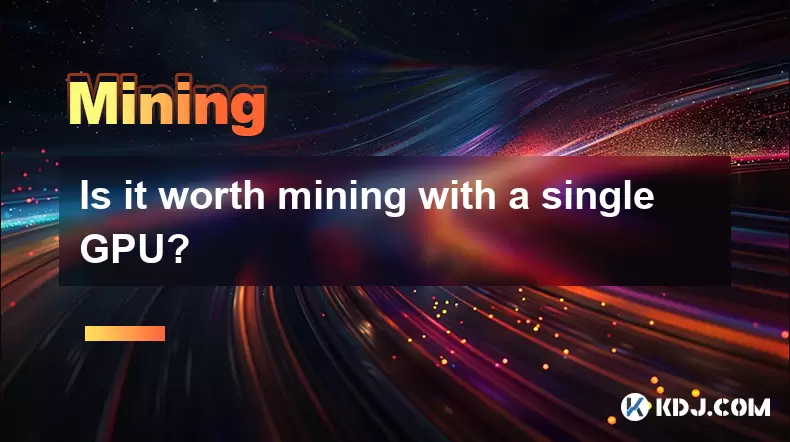-
 Bitcoin
Bitcoin $118100
0.44% -
 Ethereum
Ethereum $3765
5.84% -
 XRP
XRP $3.498
3.12% -
 Tether USDt
Tether USDt $1.000
0.00% -
 BNB
BNB $753.2
3.41% -
 Solana
Solana $181.7
3.58% -
 USDC
USDC $0.9999
0.01% -
 Dogecoin
Dogecoin $0.2704
12.75% -
 Cardano
Cardano $0.8684
5.85% -
 TRON
TRON $0.3151
-0.86% -
 Hyperliquid
Hyperliquid $46.06
4.51% -
 Stellar
Stellar $0.4695
2.48% -
 Sui
Sui $3.910
3.18% -
 Chainlink
Chainlink $19.36
6.65% -
 Hedera
Hedera $0.2750
3.99% -
 Bitcoin Cash
Bitcoin Cash $544.6
6.31% -
 Avalanche
Avalanche $25.12
3.69% -
 Shiba Inu
Shiba Inu $0.00001559
5.40% -
 Litecoin
Litecoin $116.8
5.10% -
 UNUS SED LEO
UNUS SED LEO $8.991
0.05% -
 Toncoin
Toncoin $3.283
2.79% -
 Polkadot
Polkadot $4.509
3.97% -
 Uniswap
Uniswap $10.67
6.58% -
 Ethena USDe
Ethena USDe $1.001
-0.01% -
 Monero
Monero $323.2
0.48% -
 Pepe
Pepe $0.00001410
6.37% -
 Bitget Token
Bitget Token $4.964
1.93% -
 Dai
Dai $0.9998
-0.01% -
 Aave
Aave $326.2
3.85% -
 Bittensor
Bittensor $421.8
2.46%
Is it worth mining with a single GPU?
Mining with a single GPU can be a viable option for small-scale or educational purposes, but profitability depends on electricity costs, hardware efficiency, and proper cooling.
Jul 20, 2025 at 01:00 pm

Understanding the Basics of Single GPU Mining
Mining with a single GPU has become a topic of interest among cryptocurrency enthusiasts, especially for those who want to test the waters without significant investment. The concept involves using one graphics card to solve complex cryptographic puzzles and validate transactions on a blockchain. While large-scale mining operations use multiple GPUs or ASICs, individual miners often wonder if it's feasible to start with just one.
The first thing to consider is the hashrate generated by a single GPU. Depending on the model, a single card might offer anywhere between 20-50 MH/s (for Ethereum mining), which is significantly lower than what multi-GPU rigs can achieve. However, this doesn't necessarily mean it's not worth trying, especially if you're aiming for educational purposes or small-scale passive income.
Cost vs. Potential Earnings
A critical factor in determining whether mining with a single GPU is worthwhile is the relationship between operational costs and potential earnings. Electricity consumption is a major expense, so understanding your GPU’s power draw is essential. For example, an NVIDIA RTX 3060 may consume around 170 watts under load. Over time, this can add up depending on your local energy rates.
To estimate profitability, miners often use online calculators that take into account:
- Current difficulty of the cryptocurrency being mined
- Price of electricity per kWh
- GPU efficiency and hashrate
- Pool fees (if applicable)
Using these tools, you can get a rough idea of daily or monthly returns. In many cases, a single GPU might generate only a few dollars per day, which may not offset the cost of electricity unless you live in a region with very low energy prices.
Cooling and Longevity Concerns
Running a GPU continuously at full load can lead to increased temperatures and wear on the hardware. This raises concerns about both cooling solutions and the long-term viability of the card. Proper ventilation, case airflow, or even aftermarket cooling systems are recommended to maintain safe operating conditions.
Some users opt to undervolt their GPUs to reduce heat output and power consumption while maintaining acceptable performance levels. This process involves adjusting voltage and clock speeds through software like MSI Afterburner. It requires careful calibration to avoid instability or crashes. Undervolting steps typically include:
- Installing MSI Afterburner
- Gradually reducing voltage while monitoring performance
- Stress testing the GPU to ensure stability
- Saving the custom profile
By doing this, miners can potentially extend the life of their single GPU setup and improve overall efficiency.
Software Setup for Solo Mining
Setting up a single GPU mining rig involves more than just plugging in the hardware. You'll need to install appropriate mining software, configure drivers, and connect to a mining pool or mine solo. Popular choices for mining software include:
- NiceHash, which allows switching between different algorithms automatically
- Claymore’s Dual Miner, commonly used for Ethereum and other Ethash-based coins
- PhoenixMiner, another efficient option for Ethash mining
Installation steps generally involve:
- Downloading and extracting the mining software
- Editing the batch file to input your wallet address and pool server details
- Running the miner and monitoring logs for errors
Additionally, you must create a wallet to store your mined coins. Wallets like MetaMask or Trust Wallet are commonly used for Ethereum and ERC-20 tokens. Ensure that your wallet address is correctly formatted when entering it into the mining software configuration.
Tax and Legal Considerations
Before diving into single GPU mining, it's important to understand the legal and tax implications in your jurisdiction. Some countries treat mined cryptocurrency as taxable income, while others may have specific regulations regarding mining activities.
Keep detailed records of:
- Dates and amounts of mined coins
- Electricity expenses related to mining
- Any equipment purchases or upgrades
These records will be crucial when reporting income or calculating capital gains. Consult a tax professional familiar with cryptocurrency to ensure compliance with local laws.
Frequently Asked Questions
Q: Can I mine Bitcoin with a single GPU?
A: While technically possible, mining Bitcoin with a single GPU is highly inefficient due to the dominance of ASIC miners on the network. Bitcoin uses the SHA-256 algorithm, which favors specialized hardware over general-purpose GPUs.
Q: Which cryptocurrencies are best suited for single GPU mining?
A: Coins that use memory-hard algorithms like Ethash, KawPow, or RandomX are better suited for GPU mining. Examples include Ethereum Classic, Ravencoin, and Monero.
Q: Do I need a second GPU for display while mining?
A: It’s recommended to use a separate GPU for display to avoid conflicts and improve mining stability. If you're mining with a single GPU, you may experience reduced performance or driver issues when using the same card for display tasks.
Q: How do I monitor my mining performance?
A: Tools like HWInfo, GPU-Z, or built-in features within mining software allow you to track temperature, fan speed, power usage, and hashrate in real-time. Monitoring these metrics helps optimize performance and prevent overheating.
Disclaimer:info@kdj.com
The information provided is not trading advice. kdj.com does not assume any responsibility for any investments made based on the information provided in this article. Cryptocurrencies are highly volatile and it is highly recommended that you invest with caution after thorough research!
If you believe that the content used on this website infringes your copyright, please contact us immediately (info@kdj.com) and we will delete it promptly.
- WLFI Token Trading: Community Approval and What It Means for You
- 2025-07-21 06:30:13
- Arctic Pablo: The Meme Coin Investment Opportunity Chasing Snow and ROI
- 2025-07-21 06:30:13
- Crypto & Institutions in July 2025: What's the Hype?
- 2025-07-21 04:30:12
- Pepeto, DOGE, SHIB Prices: What's Hot and What's Not in the Meme Coin Mania
- 2025-07-21 04:30:12
- Bitcoin Bulls Eye $125K Breakout: Is the Digital Gold Rush Back On?
- 2025-07-21 05:10:12
- Decrypting Crypto: Bitcoin's Real-World Utility and the Future of Finance
- 2025-07-21 05:15:12
Related knowledge

How are crypto mining profits taxed?
Jul 14,2025 at 12:28am
Understanding Cryptocurrency Mining and TaxationCryptocurrency mining involves validating transactions on a blockchain network and earning rewards in ...

How to keep a mining rig cool
Jul 12,2025 at 01:42pm
Understanding the Importance of Cooling in Mining RigsCryptocurrency mining is an intensive process that places heavy demand on hardware components, p...

How to mine crypto on a gaming PC
Jul 16,2025 at 12:00pm
What is Crypto Mining on a Gaming PC?Crypto mining involves using your computer's processing power to validate transactions on a blockchain network. A...

How to set up a crypto miner
Jul 16,2025 at 09:14am
Understanding Ethereum Gas Fees: What Are They and How Do They Work?Ethereum gas fees are a fundamental aspect of the network, representing the cost r...

Can you mine crypto on a laptop?
Jul 16,2025 at 02:21am
Is It Feasible to Mine Cryptocurrency on a Laptop?Mining cryptocurrency on a laptop is technically possible, but feasibility depends heavily on the ha...

Is crypto mining worth it?
Jul 16,2025 at 01:21am
Understanding the Basics of Crypto MiningCrypto mining refers to the process of validating transactions on a blockchain network by solving complex mat...

How are crypto mining profits taxed?
Jul 14,2025 at 12:28am
Understanding Cryptocurrency Mining and TaxationCryptocurrency mining involves validating transactions on a blockchain network and earning rewards in ...

How to keep a mining rig cool
Jul 12,2025 at 01:42pm
Understanding the Importance of Cooling in Mining RigsCryptocurrency mining is an intensive process that places heavy demand on hardware components, p...

How to mine crypto on a gaming PC
Jul 16,2025 at 12:00pm
What is Crypto Mining on a Gaming PC?Crypto mining involves using your computer's processing power to validate transactions on a blockchain network. A...

How to set up a crypto miner
Jul 16,2025 at 09:14am
Understanding Ethereum Gas Fees: What Are They and How Do They Work?Ethereum gas fees are a fundamental aspect of the network, representing the cost r...

Can you mine crypto on a laptop?
Jul 16,2025 at 02:21am
Is It Feasible to Mine Cryptocurrency on a Laptop?Mining cryptocurrency on a laptop is technically possible, but feasibility depends heavily on the ha...

Is crypto mining worth it?
Jul 16,2025 at 01:21am
Understanding the Basics of Crypto MiningCrypto mining refers to the process of validating transactions on a blockchain network by solving complex mat...
See all articles

























































































